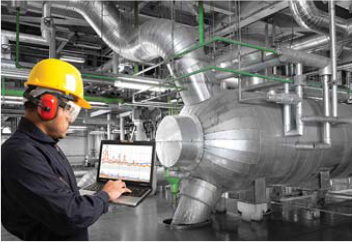
Adopting digitalisation can help drive excellence in operations and maintenance (O&M) for gencos. Digital solutions provide analytical rigour in maintenance and reliability based on historical failure and current equipment health data. Digitalised maintenance plans lead to optimised O&M costs, improved reliability and better risk management. Further, digital tools such as merit order, oil planning and coal mill window can help improve operational performance across key O&M processes. Moreover, management dashboards increase transparency and drive O&M excellence as the reliability-centred maintenance (RCM) key performance indicator (KPI) dashboard gives a unified view of the financial and operational parameters at various levels, thereby improving data tracking and transparency.
Use cases
There is immense scope for increasing the efficiency of coal-based power plants through RCM, which is a process of determining the most effective maintenance approach. RCM employs preventive maintenance, predictive maintenance, real-time monitoring, reactive maintenance and proactive maintenance techniques in an integrated manner to increase the probability of the functioning of a machine or equipment in a required way that enables to increase equipment availability and reduce maintenance and resource costs. For instance, a $10 million catastrophic failure drove the initiation of internet of things-enabled predictive maintenance programme at the global electric utility, Duke Energy’s power plants. This helped save $31.5 million in repair costs during the first three years of the company’s operation.
RCM focuses on reliability instead of availability. It follows a proactive approach to prevent failures, as compared to a reactive approach. It is analytics-driven optimised maintenance with higher availability and life cycle cost optimisation. RCM uses data for analytics and predictions (run-repair-replace), and uses real-time data and analytics to identify interventions for reliability improvement. It is an IT-driven maintenance strategy for quicker decision-making.
RCM also undertakes proactive health monitoring through equipment-wise health indices based on real-time measurement data from operator rounds. It raises automatic notifications to the engineer when the health index crosses thresholds. The analysis and reporting segment of RCM evaluates the effectiveness of the ongoing strategy for equipment family or failure mode and predicts the time of the next failure (useful in planning and budgeting). It provides information with the help of KPI dashboards. RCM’s optimisation strategy undertakes cost-benefit analysis of maintenance activities based on the actual notification history, and frequency optimisation and life cycle costing based on multiple factors including failure costs, action item costs and equipment reliability.
Further, digitalisation not only reduces the inventory cost by determining spare parts’ requirements based on failure rates, but also protects the health and safety of employees by reducing asset-related incidents. Remote surveillance, drone-assisted yard management, robot and drone-assisted inspections are some other use cases for digitalisation of gencos. For instance, Italy’s ENEL is doing a pilot to carry out robot-assisted inspection in boiler water-wall and chimney. Climbing robots will inspect difficult-to-reach areas and these robots will be equipped with cameras and probes.
Thus, digital solutions can help plant owners to quickly ramp up and ramp down their generation as per grid requirements. With advancements in digital technologies, a fleet-wide strategy of remote operation of power plants based on dynamic requirements has become a reality. Some of the other digital solutions for flexible power plant operations are process automation/boiler auto-tune; combustion stability advanced monitoring systems; online predictive tools for predicting failures, providing maintenance advisory on tube leakages by profiling critical parameters; predictive tools for assessing cycling costs and enabling least cost fleet strategy; lifetime monitoring, control and assessment; and coal analysers; besides undertaking strategic maintenance, and digitalisation for additional safety and of training resources.
For enterprises, digitalisation is being used for enhanced real-time remote visualisation through dashboard and reporting, setting up an integrated control and command centres, back-office optimisation using robotic process automation as well as for digital work processes, and creating paperless organisations, among other things.
Conclusion
While power gencos are at a nascent stage of digital transformation, gradually, digital investment is seeing an upward shift. Digital-led RCM has several tangible and intangible benefits. Tangible benefits include lower renovation and modernisation costs, a reduction in forced outage, better plant availability/plant load factor, increased mean time between failures and reduced mean time to repair. The intangible benefits include reduced firefighting and surprises, and enhanced visibility and control.
